2022 Indian Motorcycle FTR First Ride: A Savage Street Bike Fit for a Beginner
A newly-minted motorcyclist saddled up on Indian Motorcycle’s most aggressive model yet.
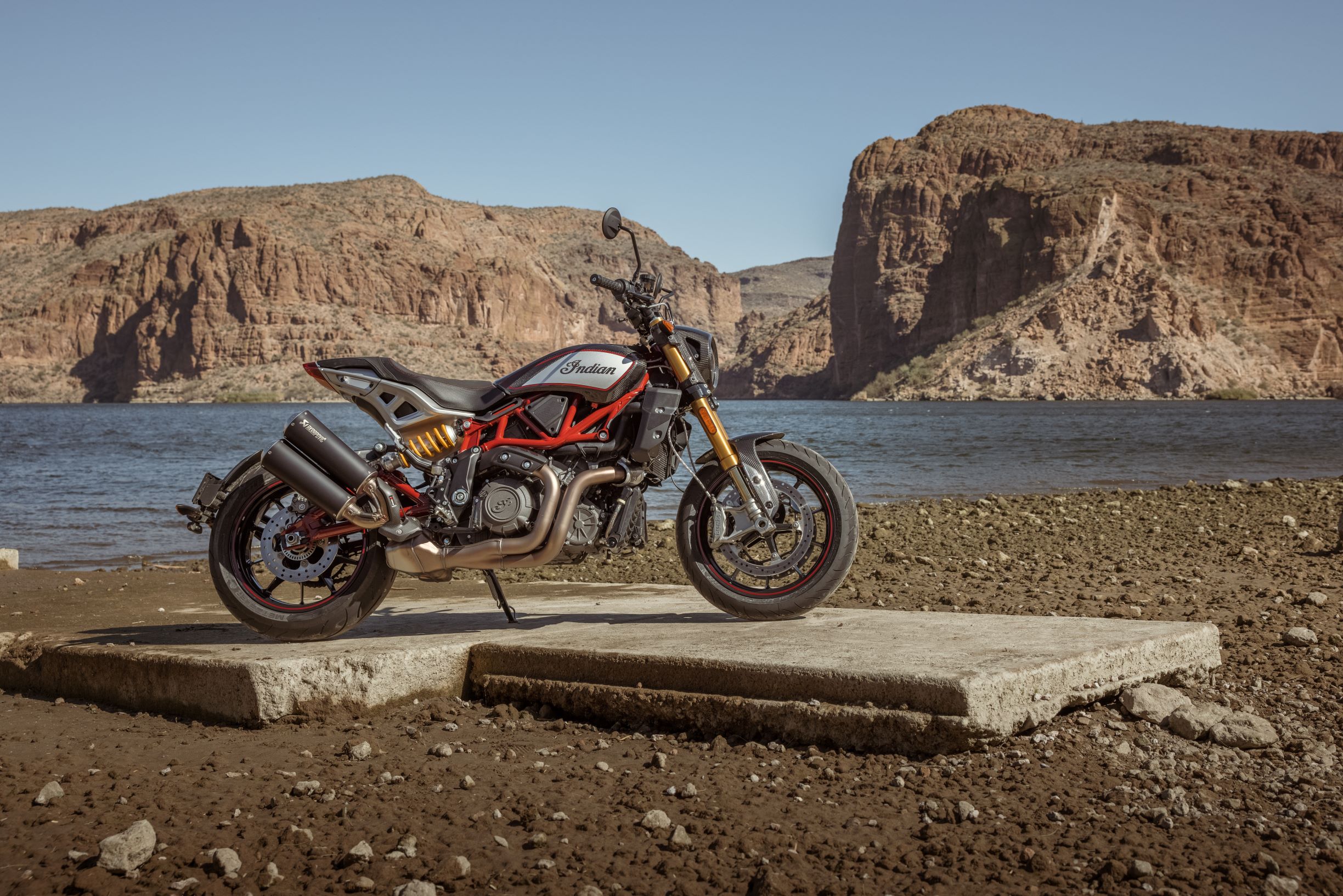
Surrounded by Arizona cacti and continuous desert sands on a balmy March morning, I was comfortably cruising along State Route 88, known locally as the Apache Trail.
My destination was farther northeast of Phoenix: A treacherous string of remote highway rife with the types of tight, guardrail-less turns that threaten to throw those who run wide off a cliff. This is the stuff of idyllically dangerous dreams for seasoned riders who have a penchant for putting their knees near the asphalt.
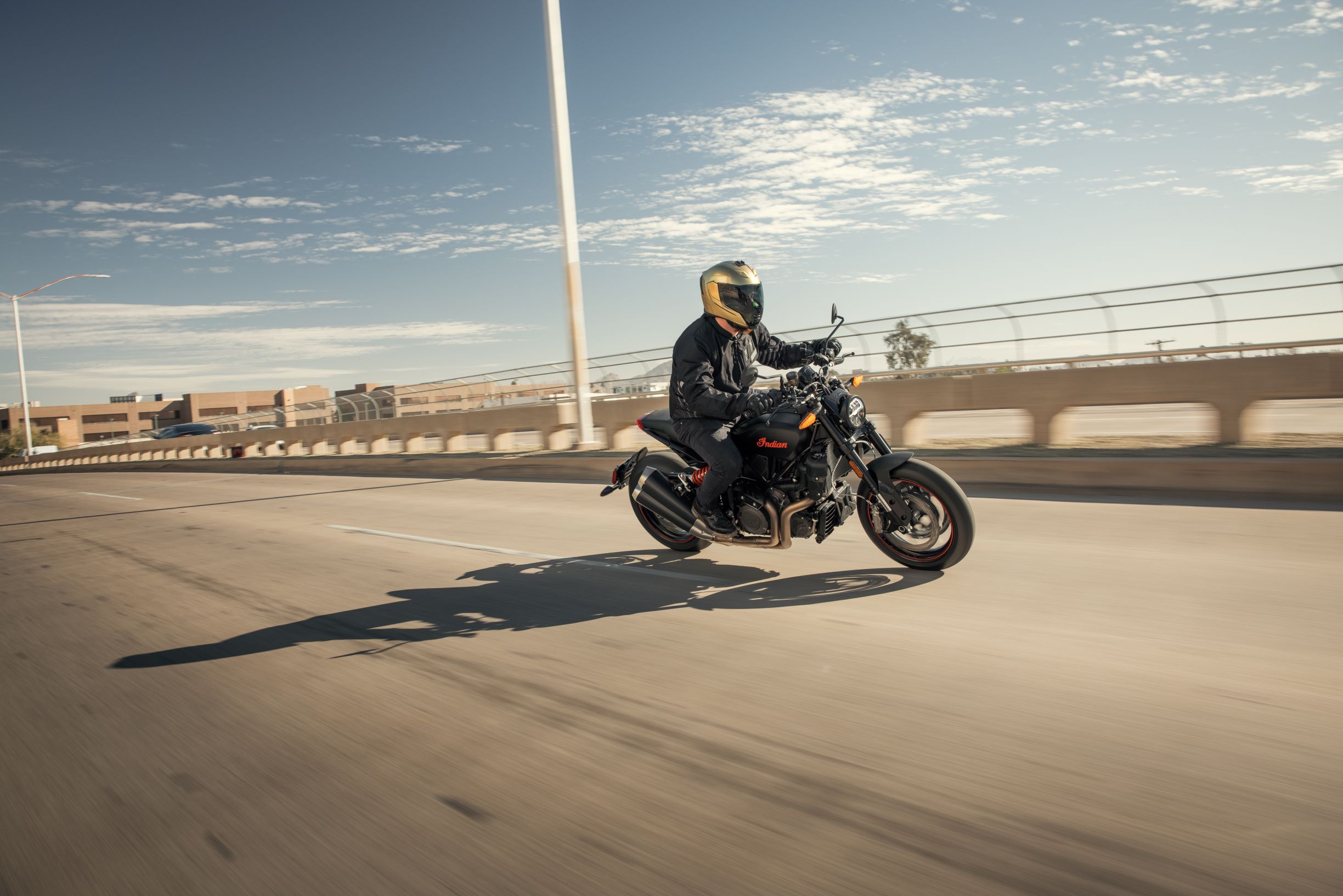
I’m not a seasoned rider. At home in Iowa, I’d just put all of 2,200 miles on my very first bike—the 2020 Indian Scout Bobber Sixty. Now Indian Motorcycle’s latest model—the 2022 Indian FTR—was sitting between my legs.
Within Indian’s lineup, the two motorcycles are polar opposites. The entry-level Scout Bobber Sixty is a low-revving, liter-sized cruiser packing a relatively modest 78 peak horsepower that’s suited perfectly to beginners like myself. The FTR is a mean naked street bike. Its 1,200cc liquid-cooled V-Twin sends 120 horses through six speeds geared not dissimilarly to a crotch rocket’s. And I was loving it.
From Flat Track Racing to the Road
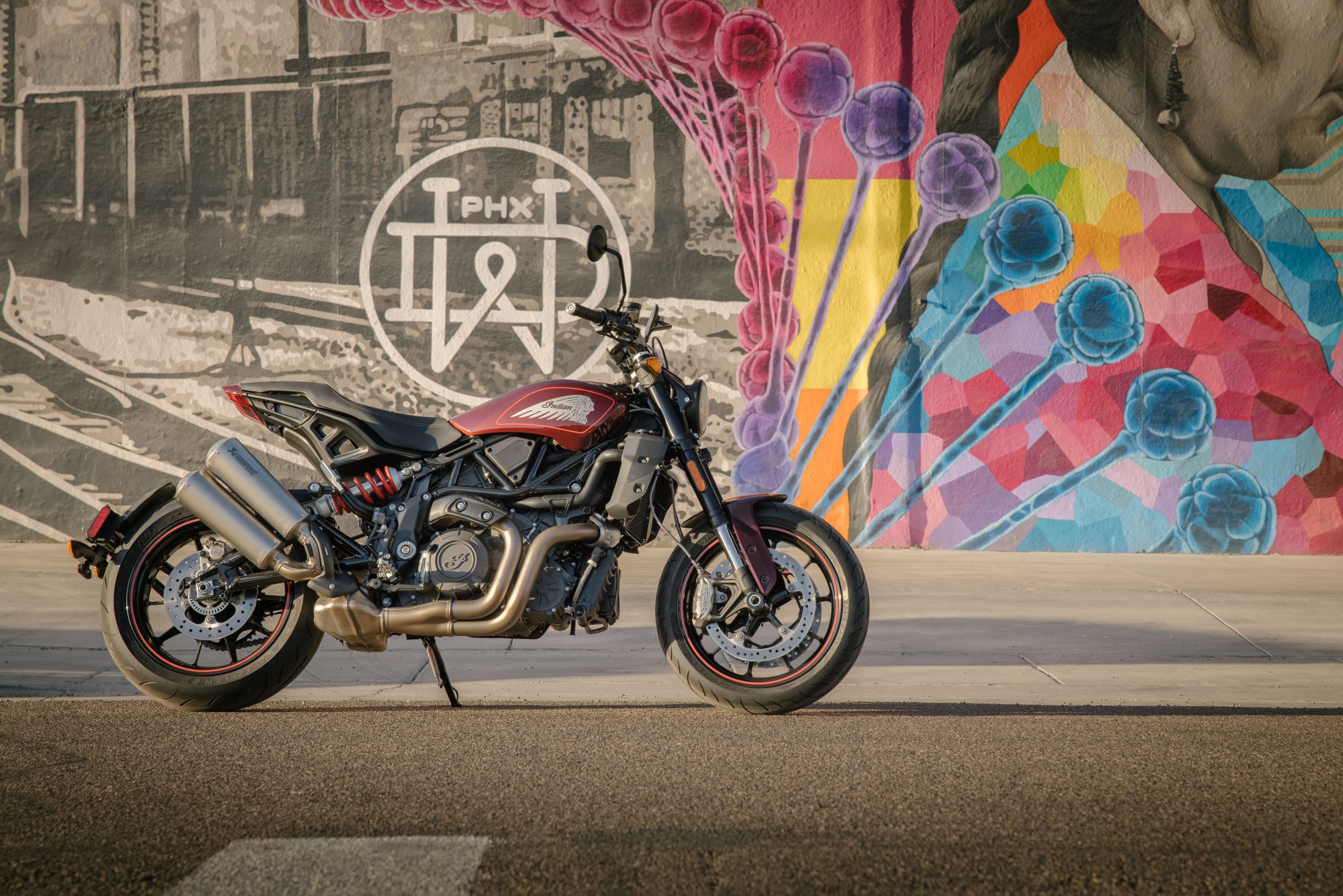
Indian has offered a production model with a Flat Track Racing (FTR) badge for only a few years. The first iteration, the 2019 FTR 1200, takes inspiration from Indian’s American Flat Track championship-winning FTR750 race bike. It’s got a versatile on-/off-road setup with front and rear wheels measuring 18 and 19 inches respectively, a sizeable 150mm suspension, a lofty 33-inch ride height, and hardcore throttle response.
A friend of mine, Max Gaffey, currently owns a top-end 2019 Indian FTR 1200 S. He loves the power and styling—the maroon-and-white colorway is particularly eye-catching—but he has a few hang-ups.
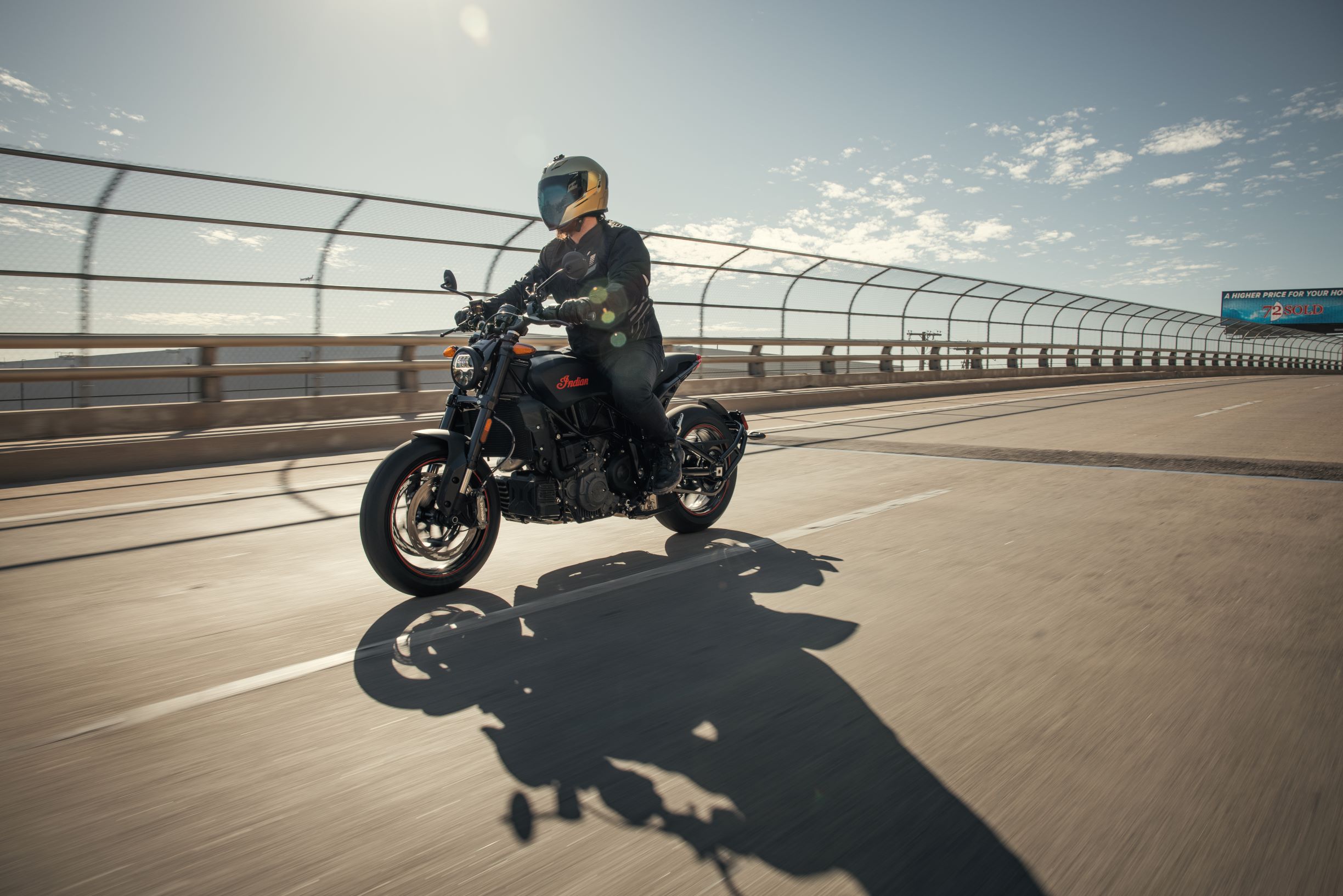
“It’s too high,” he tells me. “I’m six feet tall and can barely put both feet down. The tires are too off-road-oriented. I do like having ABS and anti-wheelie control, because I definitely would have killed myself a couple times without them.”
Indian aimed to address those and more issues with an overhaul for this year. In addition to dropping the engine’s displacement from its name, the 2022 FTR’s suspension is significantly shortened to 120mm, and it now rides on two 17-inch wheels. Both changes helped Indian lower the seat height to a more accommodating 30.7 inches. Those shorter-diameter rims also promise increased agility, all while cementing the new FTR as a dedicated street bike.
“I’m six-foot, and on an FTR 1200, I’m kind of on the balls of my feet,” Indian Product Director Ben Lindaman told me before my ride. “But on the new FTR, you’re totally totally flat-footed. It just makes you feel more comfortable, more in control. The bike also feels easier to maneuver, the center of gravity is lower—it’s really transformative.”
Inexperienced and In the Saddle
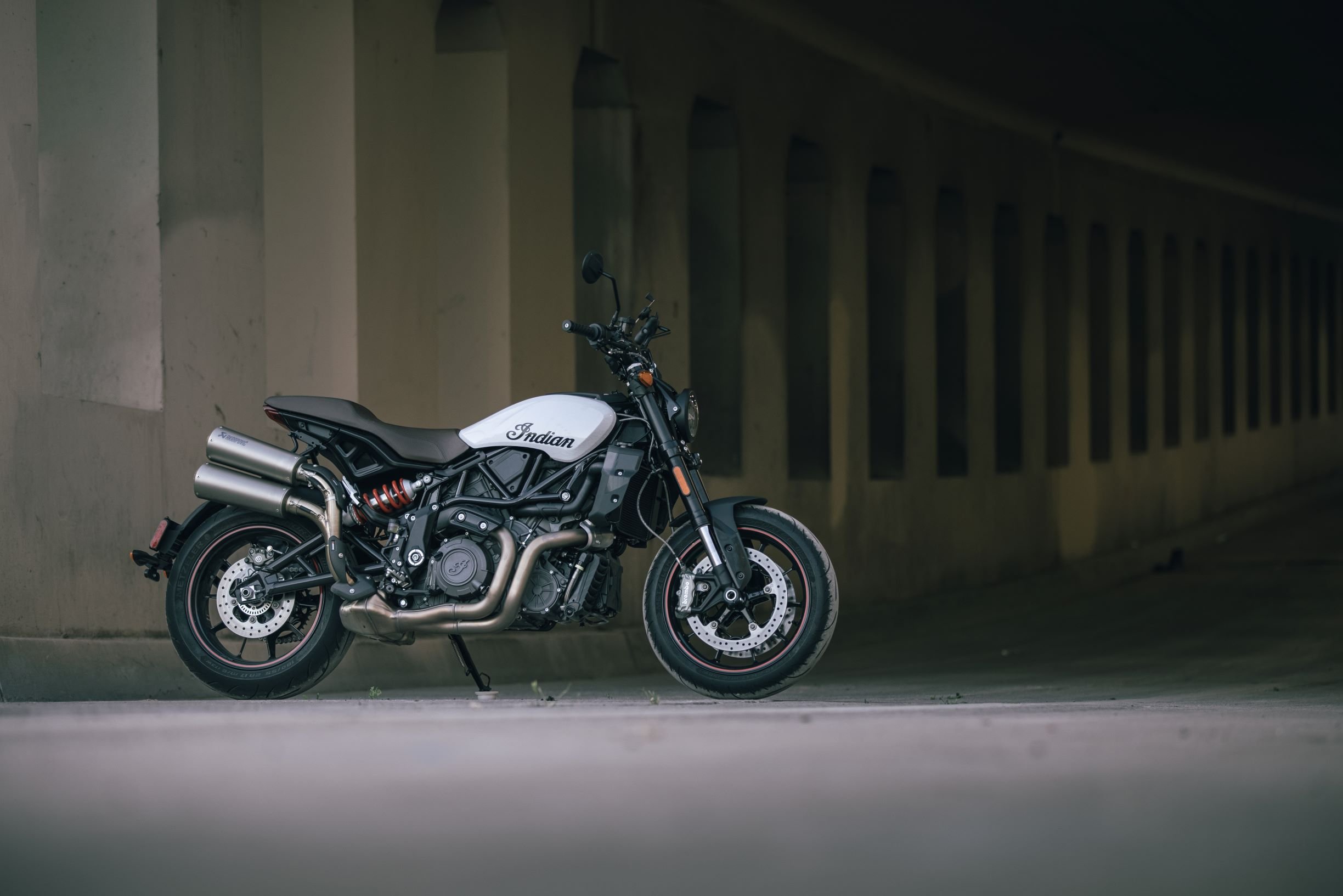
I’m even shorter than Max and Ben at five-foot ten-inches tall, a reality that’s further exacerbated by my downright feminine 30-inch in-seam. Still, saddling up was no issue. I was comfortably on the balls of my feet with both legs down, but not on my tippy toes. As it is, I rarely put both feet down in traffic because I (correctly) prefer to keep my right foot on the rear brake while leaning on my left leg.
Jumping off-the-line reminded me of the first time I summoned the guts to accelerate all-out on my Scout Bobber Sixty: It’s a heart-racing rush that makes even the most extreme roller coaster seem lame and contrived.
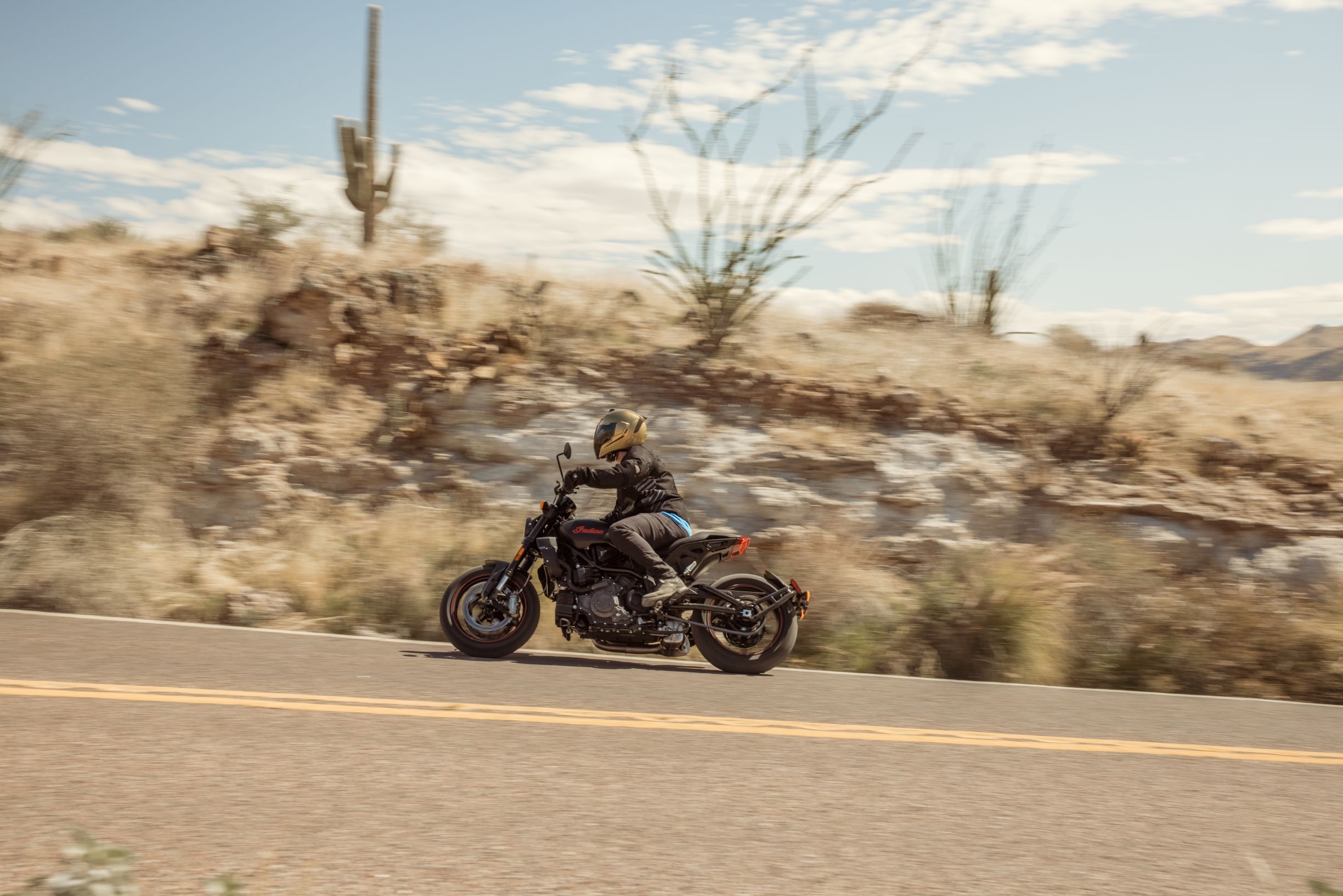
I cracked the throttle all the way back as I shifted like hell through first and second, and the FTR’s speedo needle shot up like it’d just surged from an electrical shock. I was on the base model without wheelie mitigation, so I was fighting to keep the front end from rising until I hit third.
The apprehension I had in knowing that the FTR cranks out exactly 35 percent more power than my own bike dissipated immediately. I was in love with the speed. And I was already getting cocky.
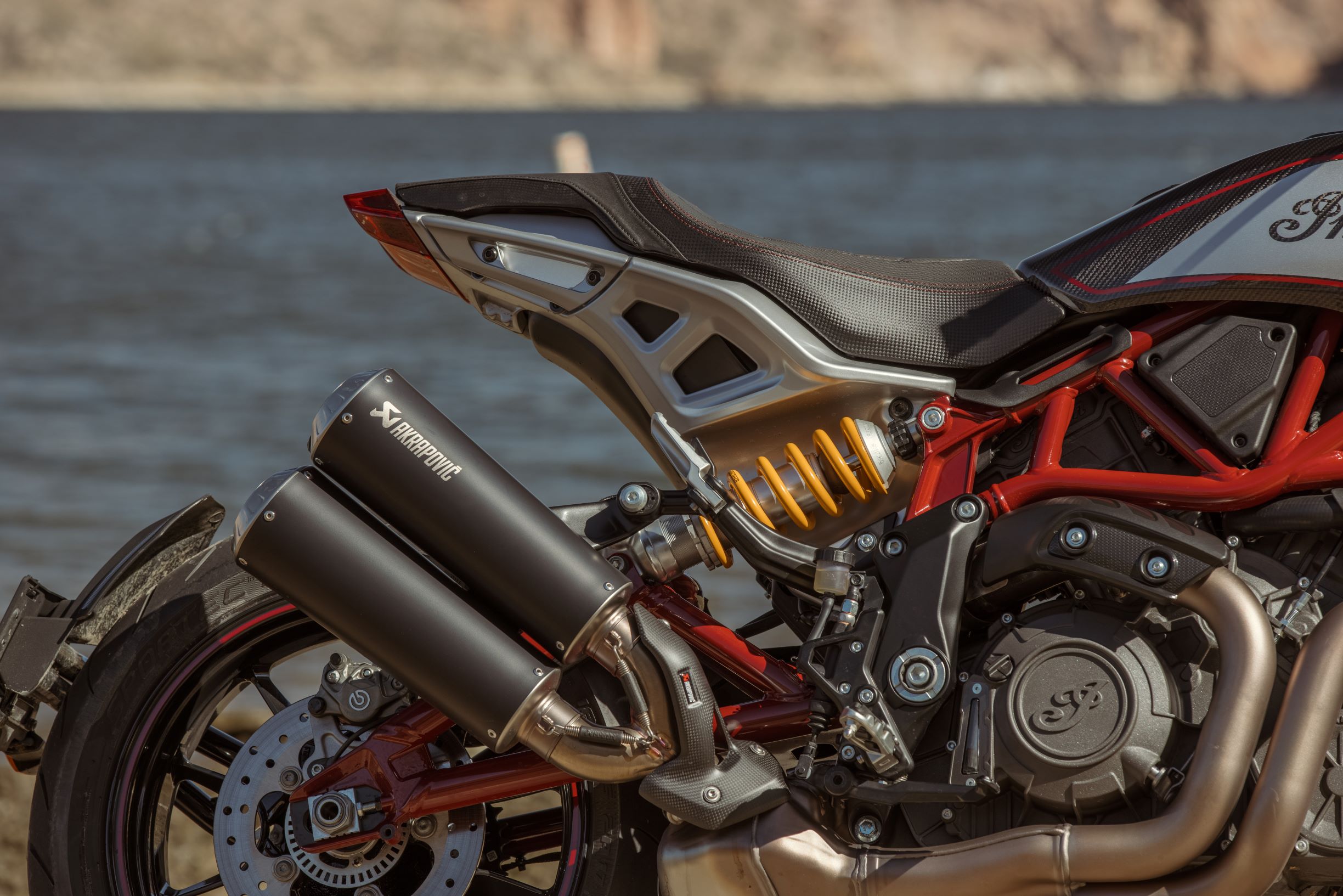
When I arrived at my destination, Indian’s crew warned of the road’s extremely technical nature. I was told to respect the machine and ride within my abilities. If I didn’t, there were several decreasing radius (i.e. tightening) corners that would punish me for being stupid.
Cockiness breeds stupidity. I set off accelerating like I was zipping through traffic on a commuter highway, never mind the most challenging road I’d ever encountered. I ran slightly wide and just across the yellow line on a couple of sharp rights, but then I started dialing-in on what felt like my maximum approach speed. I was countersteering to initiate a lean much deeper than was possible on my bike, feeling like a total badass.
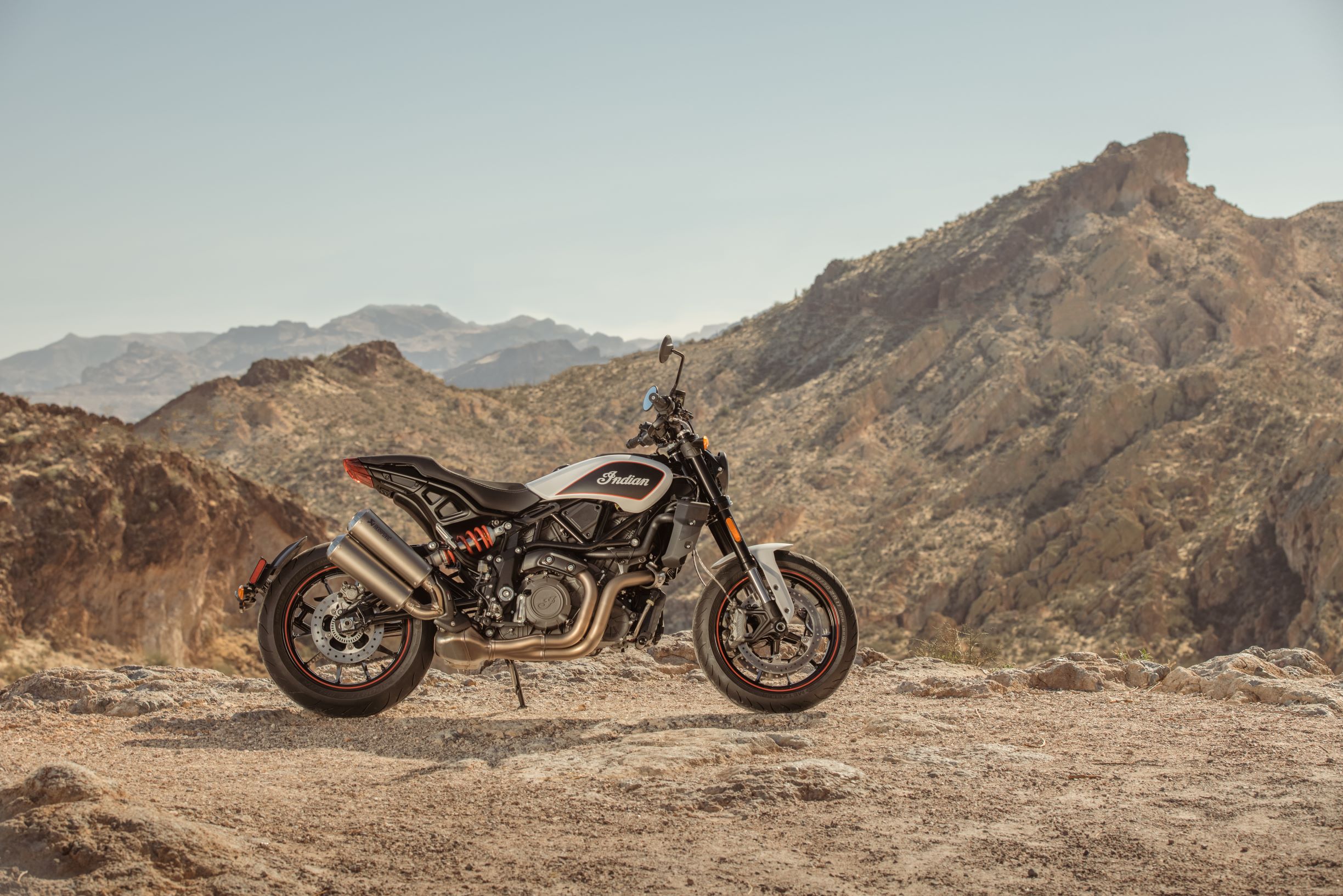
Then I ran wide again on another right turn, only I went across both lanes and completely off the road. I managed to stay a few feet away from a Thelma & Louise situation, but full-blown panic prevented me from avoiding a rock that violently bucked my feet off the pegs and above the tail. I barely saved it, and thanked the road for not putting me down.
That’s not a brag. I can ride the hell out of my Scout Bobber Sixty, but I didn’t even come close to finding the 2022 FTR’s limit before I found my own. New riders, take note: this thing is an approachable blast with an asterisk reading, “I can do more than you can, so don’t test me.”
Final Thoughts
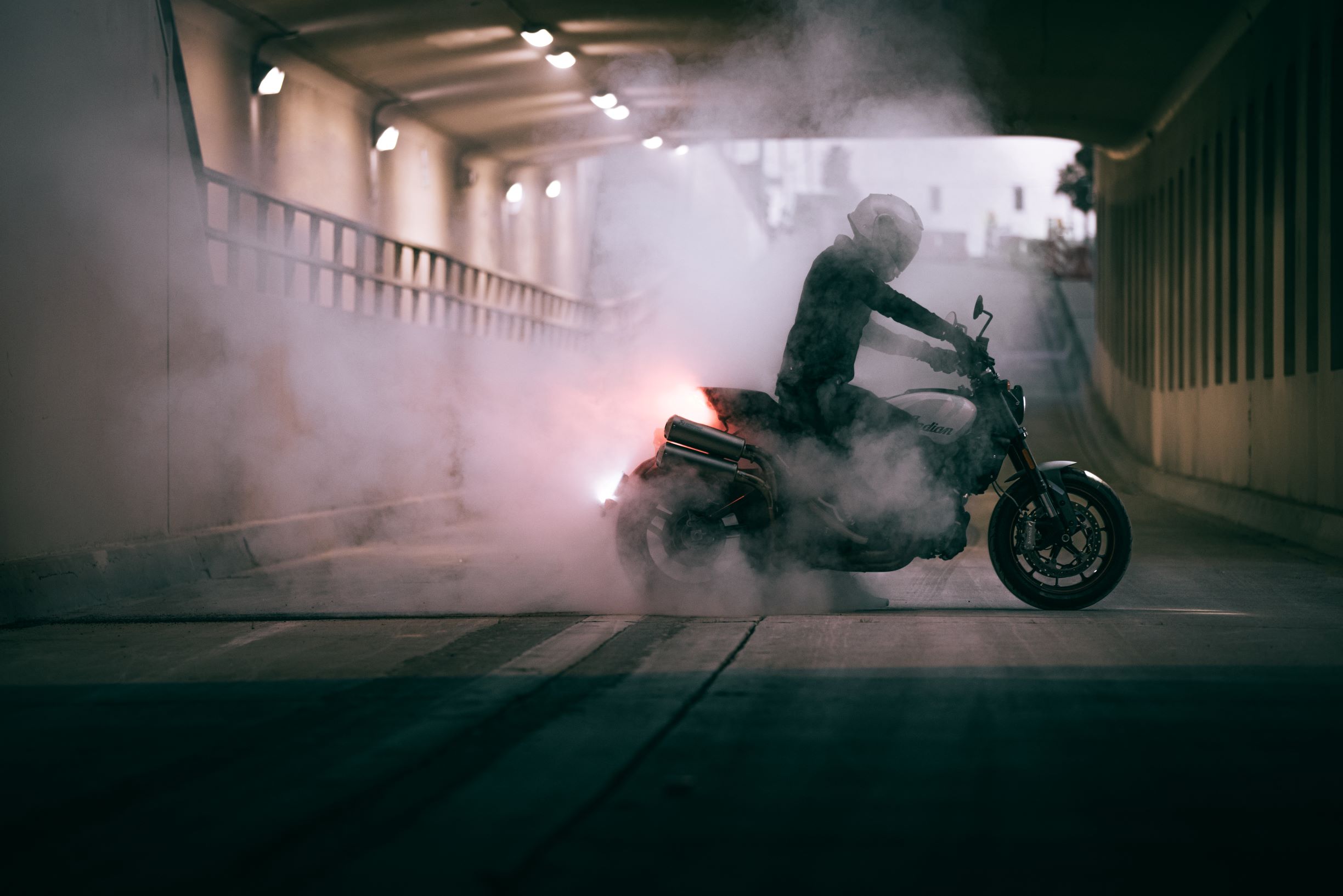
If you’re looking to level-up from a starter bike—or even get your very first set of wheels—the 2022 Indian FTR is a viable option that won’t be outgrown, save for sport bikes. But I’d advise against buying the base model, which has one standard ride mode and no wheelie mitigation. Spring for the FTR S. The mid-range model offers a throttle response-reducing Rain mode that will best facilitate a learning curve, the same Standard mode I got carried away with, and a Sport mode to keep the thrills coming.
Additionally, the FTR S comes with a suite of rider-assists, including Lean Angle Sensitivity ABS and Wheelie Control with Rear Lift Mitigation for added safety, plus Indian’s Ride Command system featuring a slick 4.3-inch touchscreen, Bluetooth connectivity, vehicle data, and other techy goodness.
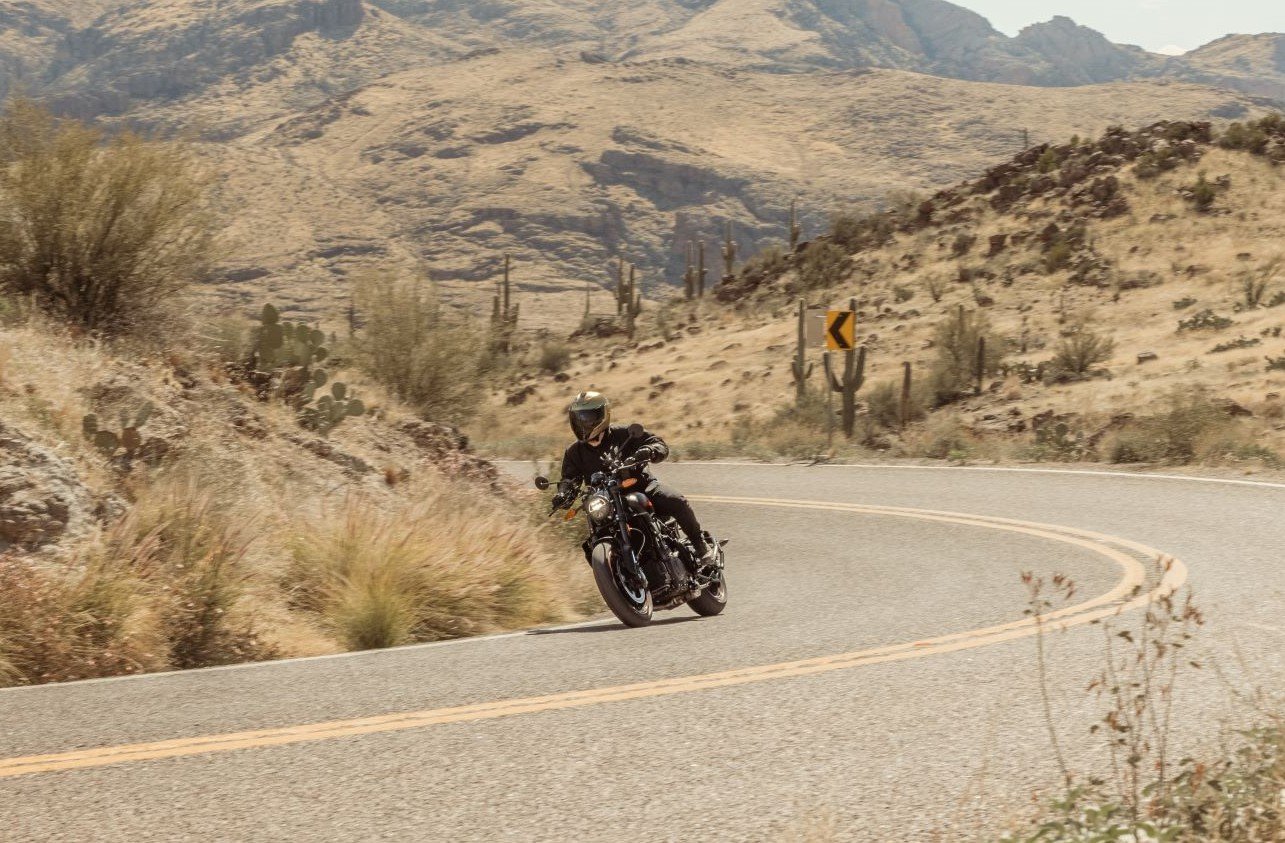
Interested buyers might also consider the flagship FTR R Carbon, which gets all of the aforementioned equipment, as well as a top-tier Ohlins suspension, and, as the name suggests, a bunch of exclusive carbon fiber bodywork.
2022 Indian FTR Starting Prices
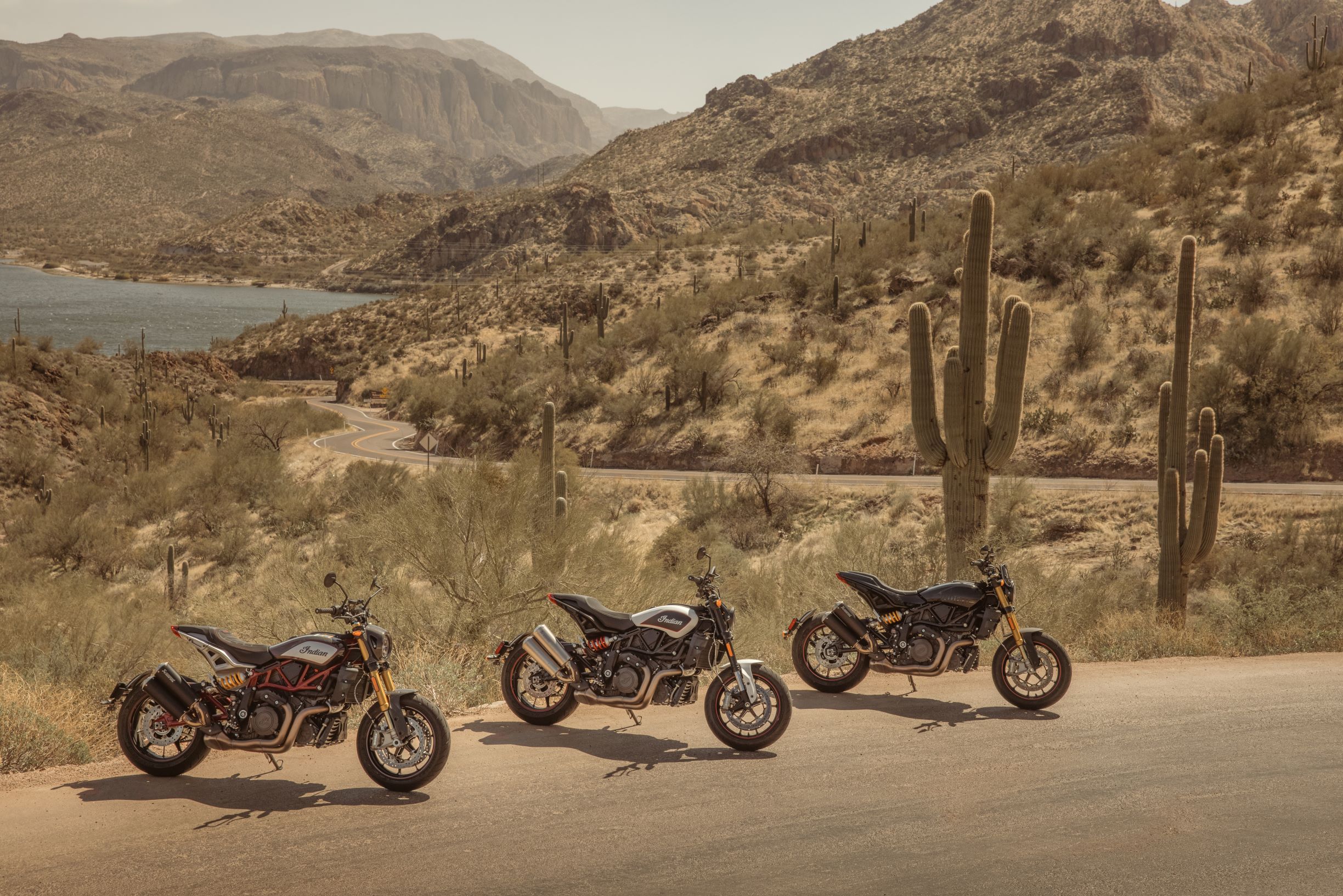
2022 Indian FTR: $12,999
2022 Indian FTR S: $14,999
2022 Indian FTR R Carbon: $16,999
